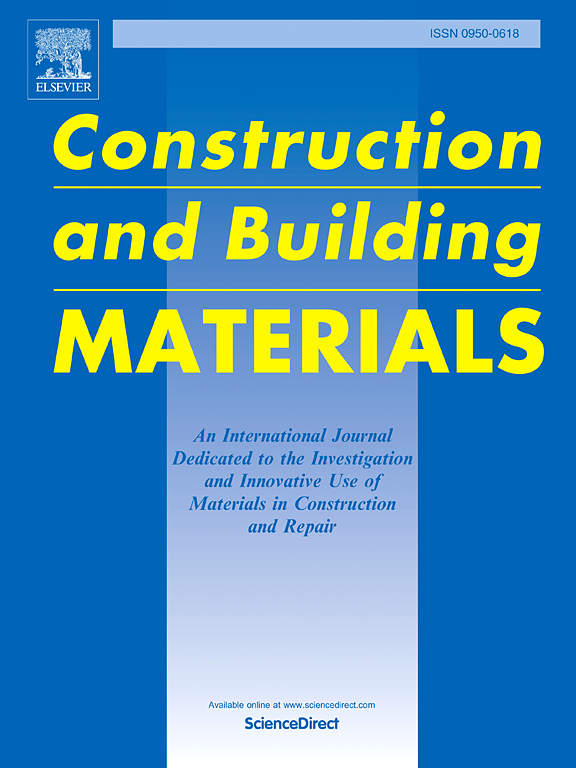Durability study of CRTS III slab ballastless track under the combined effects of fatigue damage and carbonation
IF 7.4
1区 工程技术
Q1 CONSTRUCTION & BUILDING TECHNOLOGY
引用次数: 0
Abstract
To investigate the durability issues of CRTS III slab ballastless track concrete under the combined effects of fatigue damage and carbonation, this study develops a carbonation model for concrete and a reinforcement corrosion rate model, based on porous media theory and material transport principles, combined with experimental analyses. Numerical simulations were performed, and the results were compared with experimental data to validate the models' accuracy. The study also explores the influence of various parameters on CO2 transport and internal reinforcement corrosion within the CRTS III slab ballastless track. The results indicate that, under fixed damage levels and carbonation durations, the carbonation depth of the self-compacting concrete layer is positively correlated with CO2 concentration and temperature but negatively correlated with relative humidity. The average corrosion rate of the reinforcing steel anode is approximately proportional to the anode-to-cathode surface area ratio. As saturation varies, significant changes are observed in the corrosion potential at the cathode surface, whereas the anode surface shows relatively smaller changes. Additionally, the corrosion of the outermost longitudinal reinforcing steel in the self-compacting layer intensifies with increasing temperature. This model elucidates the mechanisms of CO2 diffusion and reinforcing steel corrosion in ballastless track concrete under the combined effects of fatigue and carbonation. It provides a theoretical basis for durability analysis and assessment of CRTS III slab ballastless track systems.
求助全文
约1分钟内获得全文
求助全文
来源期刊

Construction and Building Materials
工程技术-材料科学:综合
CiteScore
13.80
自引率
21.60%
发文量
3632
审稿时长
82 days
期刊介绍:
Construction and Building Materials offers an international platform for sharing innovative and original research and development in the realm of construction and building materials, along with their practical applications in new projects and repair practices. The journal publishes a diverse array of pioneering research and application papers, detailing laboratory investigations and, to a limited extent, numerical analyses or reports on full-scale projects. Multi-part papers are discouraged.
Additionally, Construction and Building Materials features comprehensive case studies and insightful review articles that contribute to new insights in the field. Our focus is on papers related to construction materials, excluding those on structural engineering, geotechnics, and unbound highway layers. Covered materials and technologies encompass cement, concrete reinforcement, bricks and mortars, additives, corrosion technology, ceramics, timber, steel, polymers, glass fibers, recycled materials, bamboo, rammed earth, non-conventional building materials, bituminous materials, and applications in railway materials.
 求助内容:
求助内容: 应助结果提醒方式:
应助结果提醒方式:


